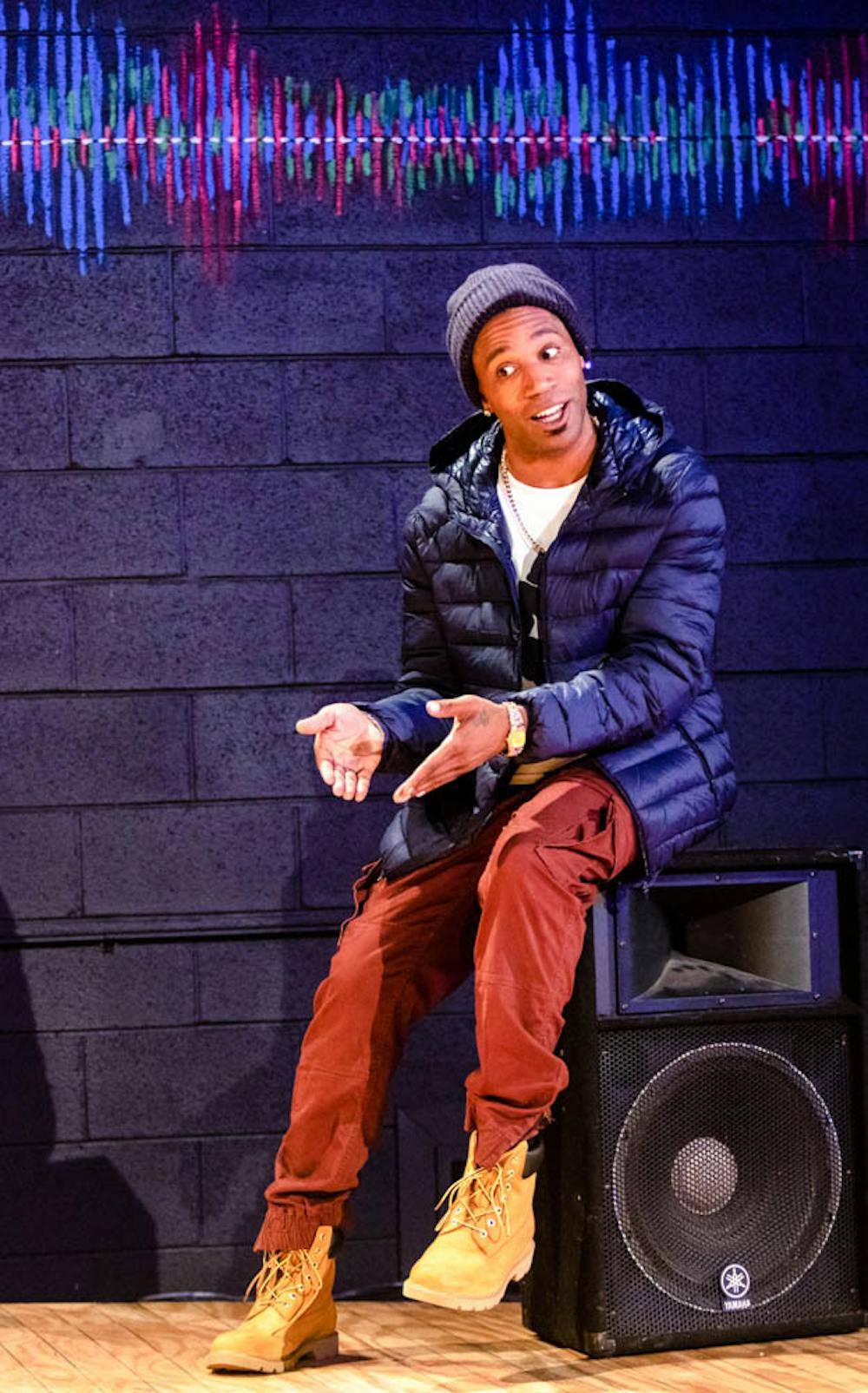The Wilbury Theatre Group makes two claims in its latest play “Hype Man”: Hip-hop — invigorating, stark testimonial — transcends borders. Its unifying power is coupled with centrifugal forces of race, gender and socioeconomic background.
Running Nov. 1-18, the piece is a timely commentary on prominent U.S. social chasms. The play is personal: Rapper Pinnacle’s friendship with hype man Verb and beatmaker Peep is challenged by conflicting views on social injustice and privilege. The play is also impersonal: It illuminates the connection between music and justice, addressing what both are and should be. Its depth and complexity are intricately layered with the lenses of each unique character.
The set is simple. Sound waves are projected onto a black brick wall. A circular stage rests in the middle. On it, a DJ stand is situated between two live speakers. The audience can focus on the nuance and implications of dialogue without being distracted by excessive decor.
As a prologue to the show, Chris LaSalsa, music coordinator at AS220 Youth, opened with a performance of his song “Love and Hate.” “Hip-hop is exploited for its bravado,” he told the crowd — hype obscures its purpose of creation. The value of hip-hop stems from storytelling — it should “bring somebody to a better place,” LaSalsa added. This effectively frames and introduces the play’s central theme: Hip-hop is “love.”
The play opens with Pinnacle rehearsing for his appearance on “The Tonight Show.” During the last practice, he and his friends read about Jerrod, a 17-year-old black teenager who was shot by police earlier that day. They later discover that Jerrod was not on a drug run as the police assumed — he had been rushing to see his hospitalized grandmother.
Verb, a black man from an underserved neighborhood, is outraged while Pinnacle, a white man who grew up in the same predominately black neighborhood, only wants to focus on his upcoming gig. Verb and Pinnacle’s contrasting reactions spark tensions within the group. This tension culminates in Verb’s public advocation for justice during Pinncacle’s live appearance on television — thus jeopardizing Pinnacle’s career. The heated aftermath is a reflection of contemporary polarizing cleavages.
But “Hype Man” does not necessarily boil down to a conversation about white privilege. Pinnacle faces his own struggles. As a low-income white rapper, he faces adversity relating to his socioeconomic class.
The sexualization and marginalization of women in rap is also highlighted in the play. However, this topic is only briefly touched upon by Peep — her discussion with Verb is underdeveloped and incomplete. Ultimately, this theme is incidental to the plot of the play.
Music has “the transformative power … to do good,” Director Don Mays wrote in the play’s program. The hype man’s “hype” is conscious. It is a celebration of his life and the issues he is intimately tied to, Verb says in the concluding scene.
As Peep punctuates: A “dog does not know what it’s like to be a cat.” This, the play contends, is why music exists. A song is never just a song. Beats and lyrics are inextricable: The words will always “creep in like second-hand smoke,” she says.
The ending of “Hype Man” echoes LaSalsa’s take on hip-hop. It is a story — a story that impersonalizes personal outlooks and makes the diverse audience a little more “sympathetic” to “all types of people,” Peep argues.
“Hype Man” is brilliant in its poignancy surrounding ultra-current affairs and rejection of passivity. It reminds artists to “get on up” and say their stories, hardships, worldviews and more. In doing so, they would be uniting an increasingly disunited country through hip-hop.





